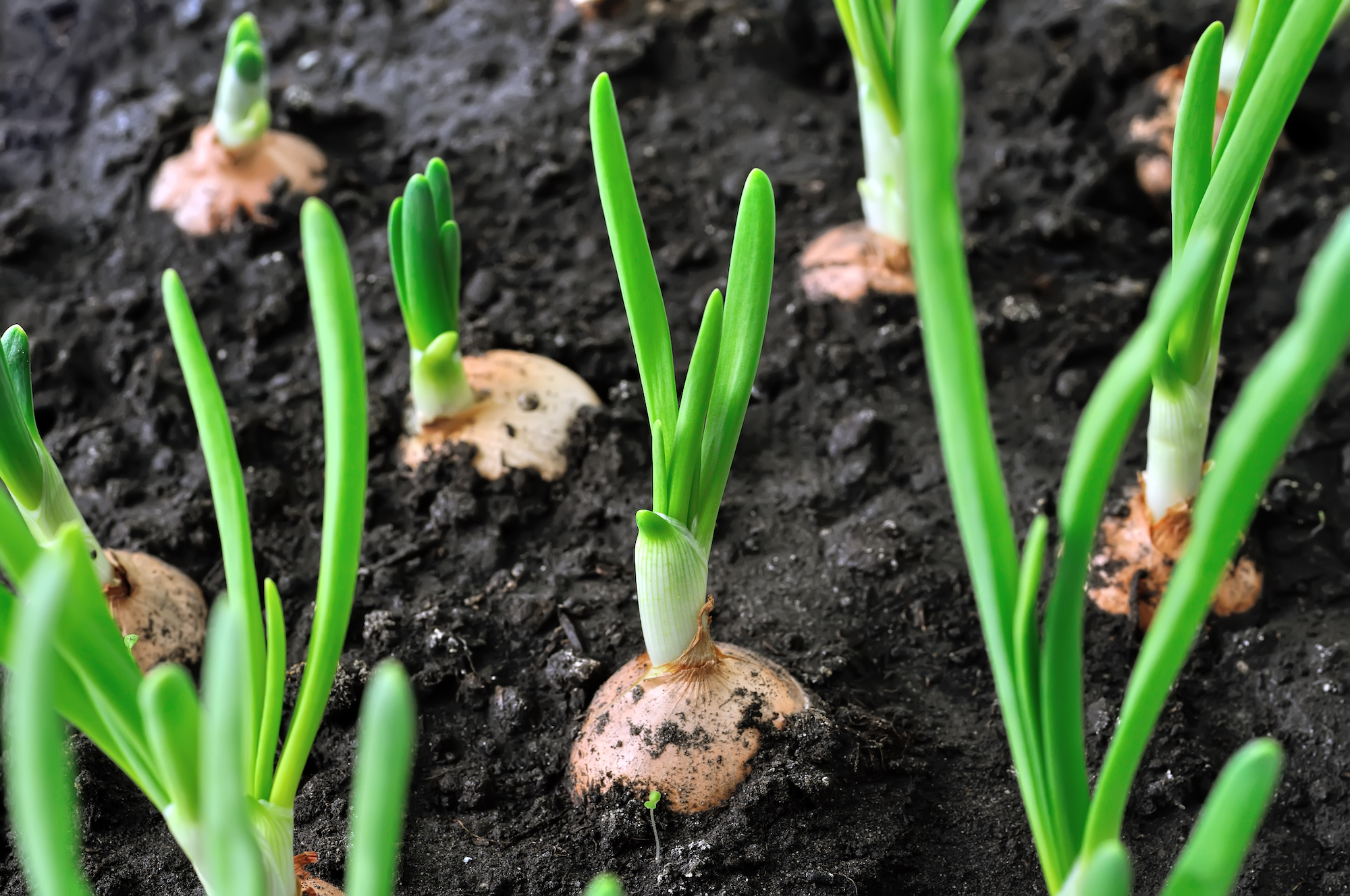Planting Onions
Select a location with full sun, where other plants won’t shade your onions. The more energy they can get from the sunlight, the larger their bulbs can grow. Mix aged manure or compost into the soil in the fall or early spring to improve texture. Ensure there are no rocks or debris. Soil needs to be well-draining and loose; compacted soil affects bulb development.
When to Plant Onions
- In spring, plant onion sets outdoors as soon as the ground can be worked, usually in late March or April, when temperatures are no longer likely to dip below 28°F (-2°C).
- In spring, start onion seeds indoors for about 6 weeks before transplanting to the ground (once the soil is at least 50°F).
- A fall-planted crop of onions needs at least 4 to 6 weeks of warm temperatures to become established in the ground. They will remain dormant during the cool season; as the temperatures and soil warm again in early spring, the onions come back to life.

How to Plant Onions
Onion plants are heavy feeders and require constant nourishment to produce big bulbs. At planting time, add nitrogen fertilizer. Many organic gardeners will add an inch of compost to the bottom of each row before planting. Or, dig a trench in the soil about 2 inches deep and 3 inches wide, and then fill the trench back in with about an inch of compost.
- Bury onion sets 2 to 6 inches apart, gently pressing them 1 to 2 inches deep into loose soil. (Use the closer spacing if you want to pull immature onions as scallions.)
- Space transplants 4 to 5 inches apart and rows 12 to 18 inches apart.
- Set the bulbs with the point end up. Again, don’t bury them more than 2 inches under the soil. It’s critical that onions aren’t planted too deep, as this can affect bulb development.
- Mulch with straw between rows to help retain moisture and stifle weeds.
Growing
We find it helpful to think of onions as a leaf crop (like lettuce or kale) rather than a root crop (like beets or carrots). Fostering healthy foliage growth ensures the plants have enough energy to form large bulbs.
- Ensure immature bulbs stay covered with light mulch to protect them, retain moisture, suppress weeds, and allow air circulation.
- Do not cover emerging onions.
- Fertilize every few weeks with nitrogen to get big bulbs. Stop fertilizing when the onions push the soil away, and the bulbing process has started. Do not put the soil back around the onions; the bulb needs to emerge above the soil.
- Generally, onion plants do not need consistent watering if light mulch is used. About 1 inch of water per square foot per week, including rainwater, is sufficient. If you want sweeter onions, water more. To deter bolting, water them often during hot spells.
- To deter thrips, intercrop onions with tomatoes or carrots in closely alternating rows.
Growing Onions in Containers
You can also grow onions in containers! Prepare a container that is at least 10 inches deep and as wide as possible (to allow for space between maturing onions). A 5-gallon bucket will support 4 to 6 onions, and a tub many more. Place the container where it will receive the maximum hours of direct sunlight per day. (It will be heavy to move once filled and planted.)
